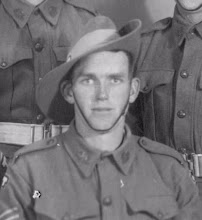The wrecks of allied tanks from Alamein.
These allied tanks, knocked out by Axis forces during the Battle of El Alamein, await transport to allied workshops for repair and refit. With a desperate need for all armoured vehicles to be serviceable and with production of new units unable to meet demand, it was a logical choice to repair these tanks.
In the foreground is the US built M4 Sherman Medium Tank. This was the tank that broke the Africa Korps. Supplied under the Lend-Lease Act where America supplied war materials to the Allies in return for military base rights in allied colonies around the world. The agreement also called for the return or destruction of all war materials after the war but with nearly a billion pounds of equipment enroute when the war ended which was vitally needed by the British it was decided by the Americans to sell it at 10 cents in the dollar.
The Americans allowed the British to pay off the money owed in 50 annual installments even allowing the British to defer payments when foreign exchange rates were not favourable to them. In essence it was a deal too good to be true. Over the years the British Government elected to defer payments on 6 occasions. The final payment was made to the US Government in 2006.
image 014269 Australian War Memorial.














